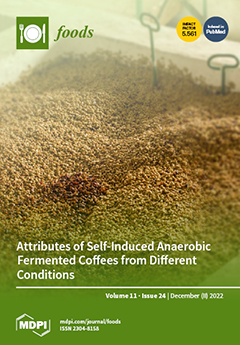Staphylococcus aureus is one of the major foodborne pathogens and can cause serious foodborne illness in humans by foods contaminated with
S. aureus enterotoxins. In recent years, livestock-associated
S. aureus has been a major public health concern for humans and has emerged in various countries globally. China is one of the largest producers of pigs and pork in the world. However, there are few studies on the detailed genotypic and pathogenic characterization of pork-associated
S. aureus in China. In this study, the prevalence, antimicrobial resistance, and genotypic characteristics of
S. aureus in raw pork in Wuhan, China, were investigated through multilocus sequence typing (MLST), staphylococcal protein A gene (
spa) typing, and whole-genome sequencing analysis. A total of 518
S. aureus isolates (16.9%) were isolated from 3067 retail and wholesale pork samples. The prevalence of
S. aureus in retail pork (22.7%) was significantly higher than in wholesale pork (15.1%), while the proportion of multidrug-resistant (MDR) isolates in wholesale pork (12.9%) was significantly higher than in retail pork (6.2%). Among the isolates, 10.8% were resistant to three or more antibiotics, with higher rates of resistance to penicillin (88.8%) and erythromycin (58.1%). A total of 28 sequence types (STs) were identified in the 518 isolates, and the predominant type was ST7 (57.5%), followed by ST5 (9.1%). In addition, based on the whole-genome sequences of 39 representative strains, 17
spa types were identified among the isolates, of which t899, t091, and t437 were the most common. Furthermore, 19 staphylococcal enterotoxin (SE) and SE-like (SEl) toxin genes were detected in the isolates, of which
selw was the most common type (100%), followed by
sei,
sem,
seo,
seu, and
selv (46.2%);
sey (35.9%); and
sea,
seg, and
sen (33.3%). This study found for the first time that ST7-t091-
selw and ST9-t899-SCCmecXII-
selw were the predominant genotypes of
S. aureus in pork in China, which indicated the spreading of
S. aureus with multiple virulence factors, especially with new SE/SEl types in pigs and pork, is a serious new challenge for food safety. Good hygiene and good production practices to prevent interspecies transmission and cross-contamination of
S. aureus in the pig–pork chain are of great significance to public health.
Full article






